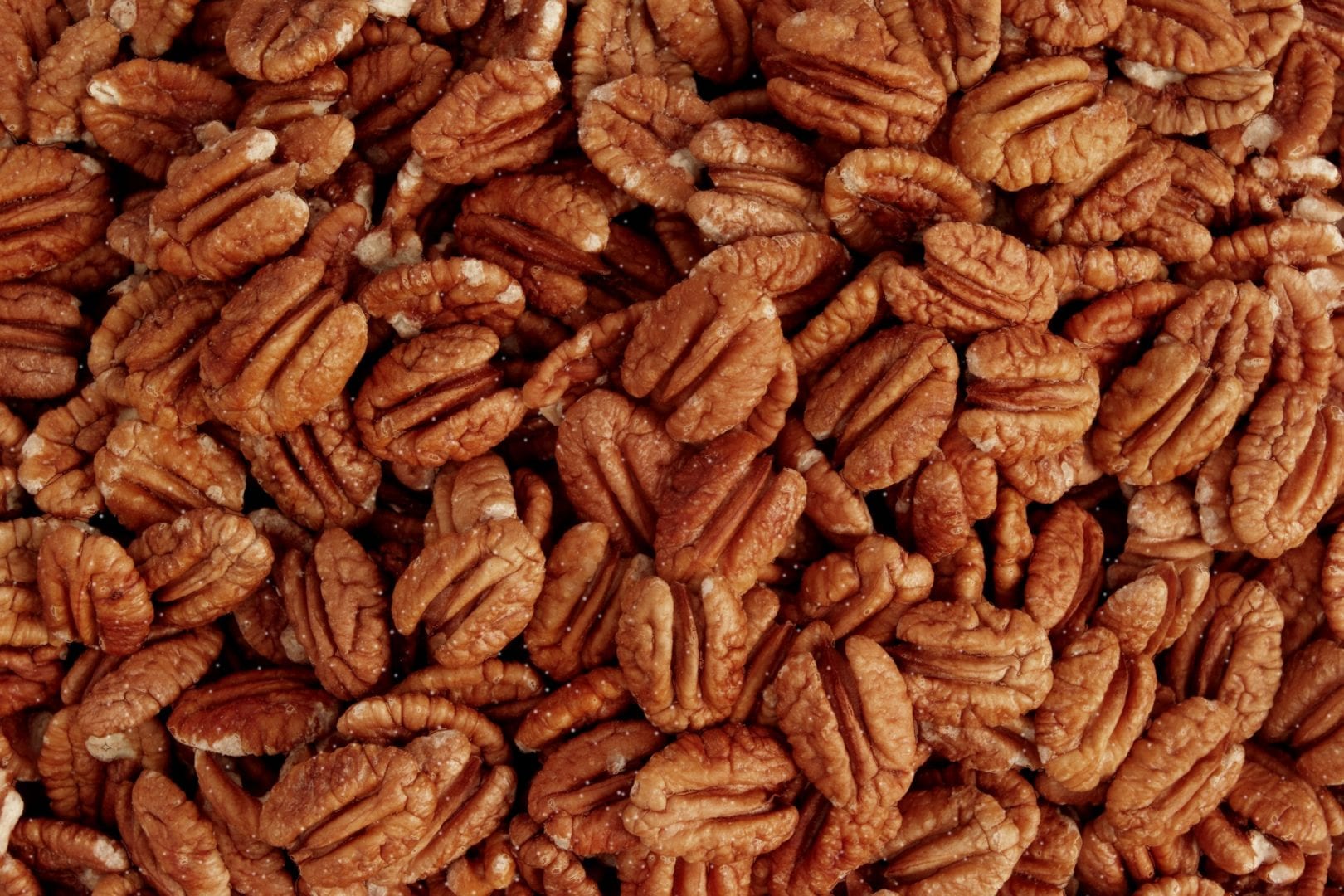Although the pecan has a long history in North America, Georgia farmers were relative latecomers in realizing the benefits of this tree nut. By the 1950s, however, Georgia had become the country’s leading producer of pecans. As of 2006 Georgia remains the largest pecan-producing state in the nation.
Pecan (Carya illinoensis) is a common name for a species of hickory in the walnut (Juglandaceae) family. According to archaeological and historical evidence, Asian species of the hickory tree arrived in North America before the first humans crossed the Bering Strait from Asia about 10,000 B.C. Other species are native to the Mississippi River valley. The tree typically grows to a height of 75 to 100 feet and is well adapted to Georgia’s sandy loam soil with clay subsoil. The term pecan is also applied to the tree’s edible fruit. The nuts have a rounded, oblong shape and vary in weight from 25 to 100 to the pound.
While there may have been wild pecans in some of Georgia’s river valleys, the nuts are generally regarded as nonnative to the state, and their value as a potential cultivated crop was not recognized until the late nineteenth century. By that time landowners began to regard pecans, long a staple of wild native trees from Iowa and Indiana to Texas and Mexico, as a commercial crop. Commercialization of pecans allowed the nut crop to expand into a number of southeastern states (including Georgia) and to New Mexico and California.
In the late 1800s several individual Georgia landowners near Savannah began producing and marketing pecans on a small scale (about ninety-seven total acres by 1889). By 1910 a “pecan boom” began when southwest Georgia landowners started planting what became thousands of acres of pecans. The orchards, however, were not looked upon as a commercial agricultural venture but as a real estate enterprise. Most of the acreage planted during the fifteen-year boom, from 1910 to 1925, were sold as five- to ten-acre units for homes or small farms. Most of this acreage was concentrated in Dougherty and Mitchell counties.
Those early-twentieth-century plantations consistently remain the center of Georgia’s pecan-producing counties today. Modern orchards with plantings of scientifically improved pecan varieties now yield what are called “papershell” pecans, so named because the nuts are easy to crack and shell.
By the 1920s Georgia was producing 2.5 million pounds of pecans. As of 2006 Georgia pecan orchards range in size from just a few trees to several thousand acres, with more than 142,500 acres planted. Georgia is also fortunate to have an early harvest date compared to other pecan-producing areas, which often results in good prices for Georgia growers. They produced about 45 million pounds in 2004 and 70 million pounds in 2005. The farm-gate value for the crop in 2004 was more than $121 million.
Source: Pecans
Jones, Barry W. “Pecans.” New Georgia Encyclopedia. 02 December 2015. Web. 04 January 2016.

